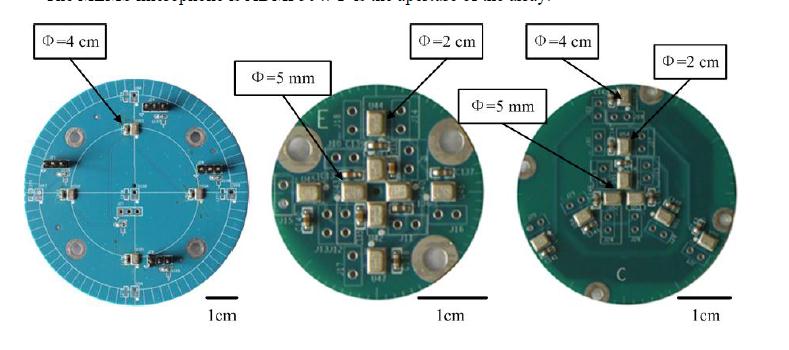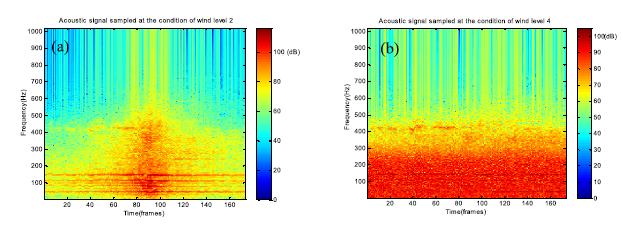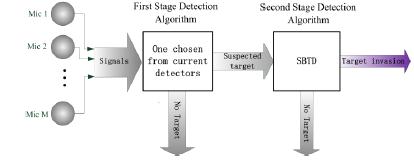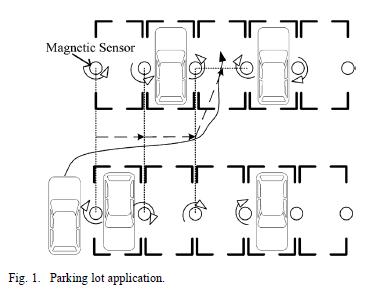-
31-10-2017
Design of Small MEMS Microphone Array Systems for Direction Finding of Outdoors Moving Vehicles
In this paper, a MEMS microphone array system scheme is proposed which implements real-time direction of arrival (DOA) estimation for moving vehicles. Wind noise is the primary source of unwanted noise on microphones outdoors. A multiple signal classification (MUSIC) algorithm is used in this paper for direction finding associated with spatial coherence to discriminate between the wind noise and the acoustic signals of a vehicle. The method is implemented in a SHARC processor and the real-time estimated DOA is uploaded through Bluetooth or a UART module. Experimental results in different places show the validity of the system and the deviation is no bigger than in the presence of wind noise.[ Learn more ]
-
31-10-2017
Design of an Acoustic Target Classification System Based on Small-Aperture Microphone Array
ABSTRACT The acoustic recognition module of the unattended ground sensor (UGS) system applied in wild environments is faced with the challenge of complicated noise interference. In this paper, a small-aperture microphone array (MA)-based acoustic target classification system, including the system hardware architecture and classification algorithm scheme, is designed as a node-level sensor for the application of UGS in noisy situation. [ Learn more ]
-
31-10-2017
A Two-Stage Detection Method for Moving Targets in the Wild Based on Microphone Array
ABSTRACT Target detection is an important issue in the unattended ground sensors. In this paper, inspired by the idea of subspace-based direction of arrival estimation algorithms, a new target detection algorithm called subspace-based target detection (SBTD) is proposed to detect moving targets. The SBTD employs the SNR of the acoustic signals to decide whether moving targets are exiting or not. Although the SBTD has good detection performance, its cost maybe a little high for unattended sensors with low-cost hardware and long-term monitoring. To relieve the cost, we propose the hierarchical detection scheme and develop a two-stage detection method based on the SBTD for target detection in the wild, in which the first stage detection alg...[ Learn more ]
-
31-10-2017
Design of a Direction-of-Arrival Estimation Method Used for an Automatic Bearing Tracking System
Abstract In this paper, we introduce a sub-band direction-of-arrival (DOA) estimation method suitable for employment within an automatic bearing tracking system. Inspired by the magnitude-squared coherence (MSC), we extend the MSC to the sub-band and propose the sub-band magnitude-squared coherence (SMSC) to measure the coherence between the frequency sub-bands of wideband signals. Then, we design a sub-band DOA estimation method which chooses a sub-band from the wideband signals by SMSC for the bearing tracking system. [ Learn more ]
-
27-10-2017
A Practicable Method for Ferromagnetic Object Moving Direction Identification
The direction of a moving target is an important piece of information in many wireless sensor network (WSN) applications, such as in boundary security, traffic flow control, etc. Due to its robustness, the magnetic sensor can be used to detect a passing ferromagnetic object. By using the orthogonality of two perpendicularly placed sensing units in a monomer magnetic sensor, a linear algorithm based on a magnetic dipole model to identify the ferromagnetic object's moving direction is introduced in this paper. It has been successfully applied in real WSN applications to reduce the numbers of nodes, and prolong the lifetime of the network. Both simulation and field experiments show it has strong noise immunity and more than 95% correction r...[ Learn more ]





